Sukiyaki, an immensely popular Japanese hot pot dish, features the flavors of beef and vegetables combined with a sweet and savory sauce in perfect harmony. While often enjoyed during the cold winter months, its delicious taste makes it a year-round favorite in Japan.
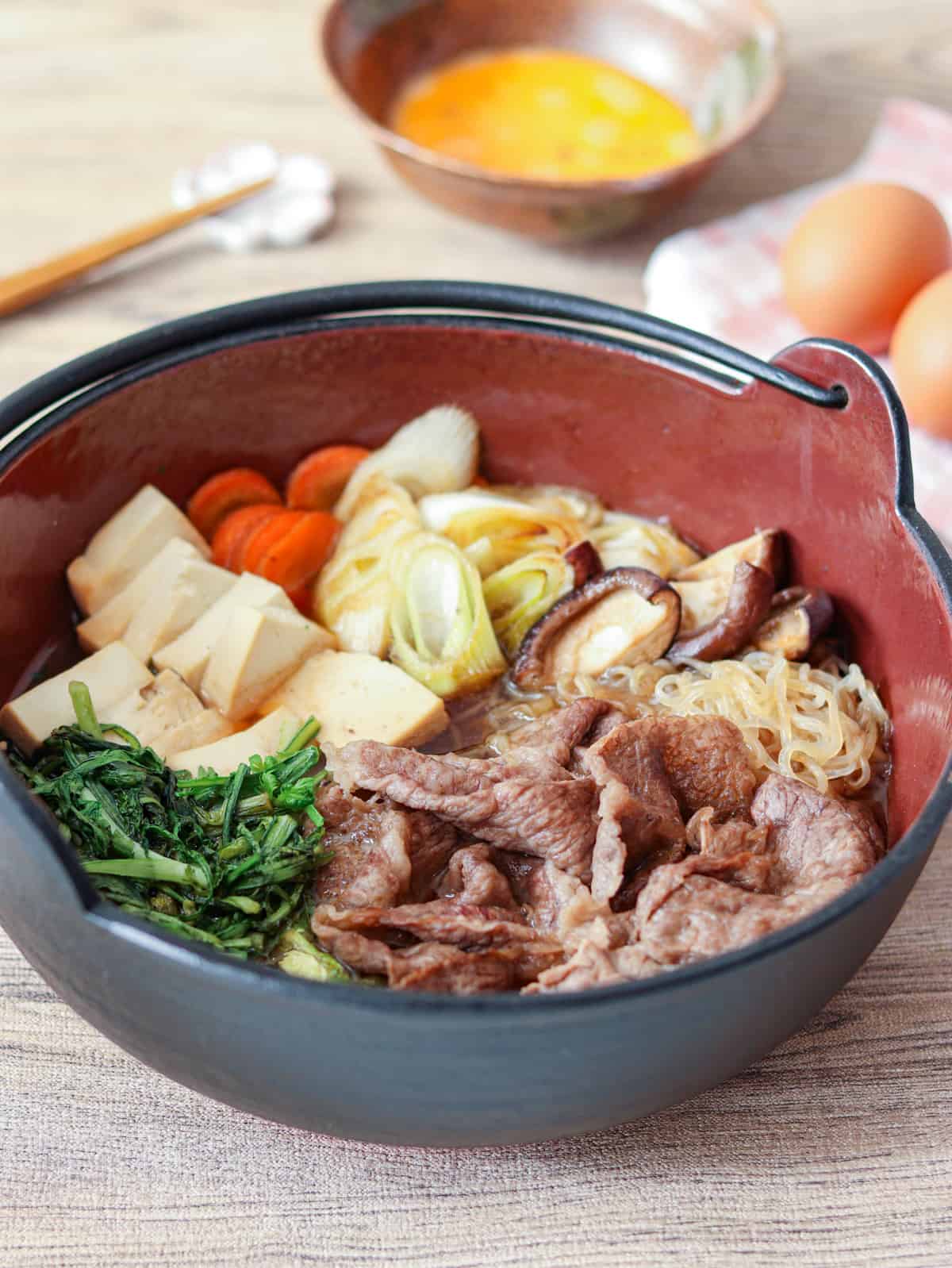
Jump to:
What is Sukiyaki?
Sukiyaki is a Japanese one-pot dish in which beef, vegetables, and other ingredients are cooked in a sweet and savory sauce. "Suki" refers to a plow, and "yaki" means to cook. While there are various theories as to the origin of the name, it is generally believed that it derives from using a plow (suki), a farming implement, as a substitute for a pot to cook (yaki) the ingredients.
This dish is typically enjoyed by several people gathered around a single pot, with each person serving themselves ingredients from the pot into their own bowls. Of course, it can also be enjoyed alone, but it is generally seen as a dish for sharing with family, friends, or loved ones.
Since thinly sliced, marbled beef is often used, it is one of the most popular dishes served at year-end and New Year's gatherings with family or relatives in Japan.
Typical ingredients
Sukiyaki is typically made using the following four main ingredient groups:
- Beef: Very thinly sliced, about 0.08 inch (2 mm) thick. Thick slices of beef should not be used, as they will become tough during cooking. A moderate amount of fat is preferable to lean meat.
- Aroma and flavor-enhancing ingredients: Naganegi (Japanese leeks), onions, hakusai (napa cabbage), shiitake mushrooms, shimeji mushrooms, and others.
- Aroma and texture-enhancing ingredients: Shungiku (crown daisy, similar to bitter spinach), mizuna (Japanese mustard greens), carrots, and others.
- Ingredients that adjust for moisture and absorb flavors: Shirataki (konjac) noodles, kudzu starch noodles, firm tofu (momen tofu), atsuage (thick fried tofu), fu (Japanese wheat gluten), and others.
You can enhance the flavor of your sukiyaki by using a well-balanced combination of ingredients from each category. However, you don't need to worry too much about it. Even many Japanese people are not fully aware of the role of each ingredient. In short, you can add any ingredients you like.
After all the prepared ingredients have been consumed, it is common practice to simmer udon noodles or rice in the remaining sauce and enjoy it as the final dish. The sweet and savory sauce pairs well with either option.
Differences by region
Sukiyaki is prepared differently in various regions of Japan. For example, in Kyoto, the ingredients are mainly sautéed, whereas in Tokyo, they are mostly simmered. This is because Kyoto has preserved the original method of making sukiyaki, while Tokyo was influenced by a dish called "Gyu Nabe" (beef hot pot), which became popular in the 19th century.
In other regions, this dish is made slightly differently, not only in preparation method but also in the ingredients. In Osaka and Kobe, kombu dashi (kelp stock) is used for seasoning, and in some other regions, pork or chicken is used instead of beef.
The recipe I'm sharing on this page is one that I have refined over many years by incorporating various elements. I hope you enjoy it.
Primary cooking processes and timing of eating
Sukiyaki is a dish that can be cooked and enjoyed repeatedly. The main cooking process is as follows:
- Prepare the ingredients and sukiyaki sauce.
- Sauté the beef slices in a pot and season them. Then, remove them and transfer them to a plate.
- Add the sukiyaki sauce and other ingredients to the pot and bring it to a simmer.
- When the ingredients are partially cooked, return the beef to the pot and continue to simmer until fully cooked. Then, enjoy.
- Repeat steps 3 and 4 until all the ingredients are used (if the pot cannot hold all of the ingredients or you are preparing more than 3 servings).
- Once all the ingredients have been consumed, add udon noodles or rice to the pot and simmer until cooked. Then, enjoy.
The timing of eating sukiyaki varies from household to household and depends on personal preference. Some people prefer to eat only the beef first, after it has been sautéed according to step 2. This allows them to fully enjoy the flavor of the beef.
Step 5 is necessary when making a large amount of sukiyaki because not all the ingredients can fit in a single pot. By simmering the ingredients in batches, you can always enjoy freshly prepared flavor.
Surprising fact
Actually, there is something I have not told you yet about an important ingredient for sukiyaki. The information you are about to read might surprise you. Are you ready?
Once the sukiyaki is prepared, it is brought to the dining table in a pot, and each person takes a bowl to serve themselves their own portion. Typically, each bowl is filled with beaten egg for dipping purposes.
It may sound shocking, but it is true. Eggs in Japan are sanitized in such a way that they are safe to eat raw. The mild flavor of raw eggs goes well with the sweet and savory sukiyaki sauce. If you can find eggs that are safe to eat raw (such as pasteurized eggs), go ahead and give it a try.
You can still enjoy sukiyaki without beaten egg. There are people in Japan who enjoy this dish without eggs. However, in that case, you might want to dilute the flavor of the sukiyaki sauce slightly with water or kombu dashi.
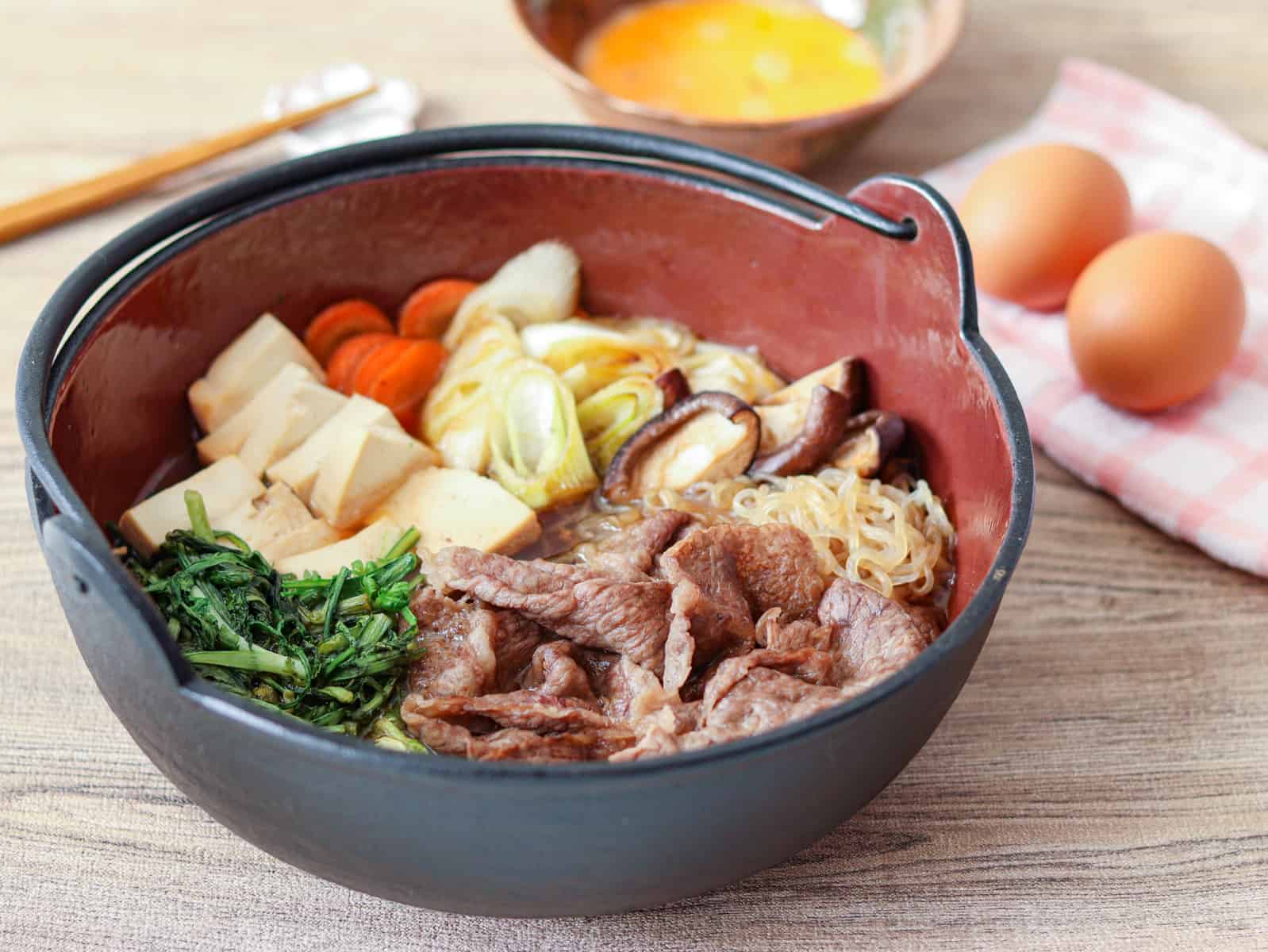
📋Step-by-step recipe
Ingredients
Sukiyaki sauce:
- ⅓ cup sake
- ⅓ cup mirin
- ⅓ cup soy sauce
- 2 Tbsp sugar
Sukiyaki:
- 0.55 lb thinly sliced beef
- 3.5 oz Japanese leek (naganegi) (can be substituted with regular leek)
- 4 shiitake mushrooms
- 3 leaves hakusai (napa cabbage)
- 3.5 oz shungiku (crown daisy)
- 1.2 oz carrot
- 1 package shirataki (konjac) noodles (7 oz/200 g)
- 1 Tbsp sugar or salt (for the shirataki)
- 5.3 oz firm tofu (momen tofu)
- 1 Tbsp beef fat (neutral oil can be substituted)
For dipping:
- 2 (or more) pasteurized eggs
For the final dish:
- 2 servings udon noodles (frozen, dried, or pre-cooked)
Instructions
🕒 Total: 35 mins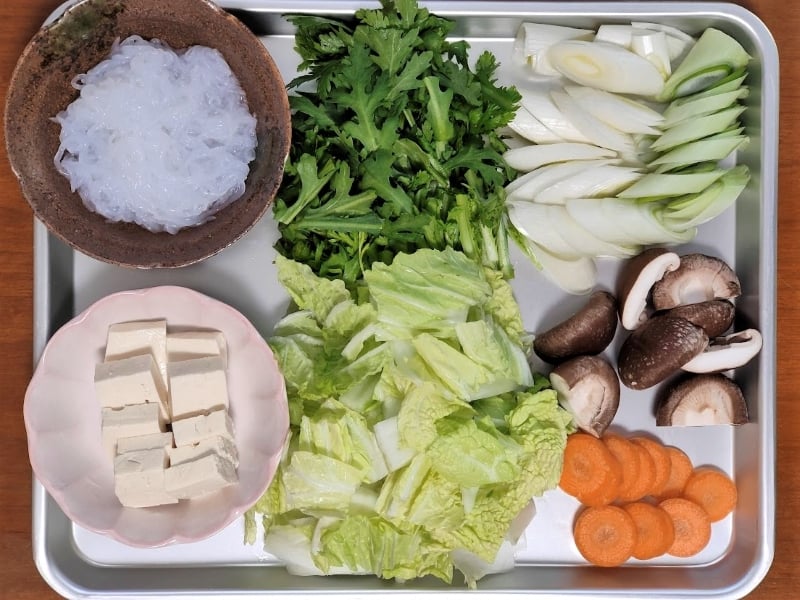
Step 1
Prepare the ingredients as follows:
Japanese leek: Slice it diagonally into ⅖-inch (1 cm) pieces.
Shiitake mushrooms: Remove the stems and cut the caps in half.
Hakusai: Cut it into bite-sized pieces.
Shungiku: Cut it into 1.6-inch (4 cm) pieces.
Carrot: Cut it into ⅕-inch (5 mm) thick slices.
Shirataki noodles: Rinse them with water and cut them in half. Toss them with sugar or salt in a colander and let them sit for 3 minutes. Then, rinse them under running water.
Tofu: Cut it into bite-sized pieces.
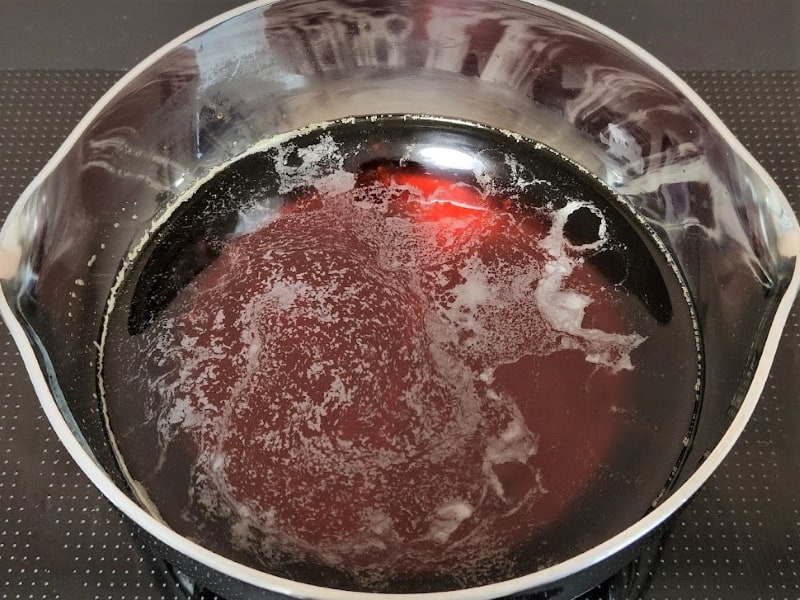
Step 2
Put seasonings for sukiyaki sauce (sake, mirin, soy sauce, and sugar) in a small pot and cook over medium heat. Once the sugar has dissolved, turn off the heat. Sukiyaki sauce is ready.
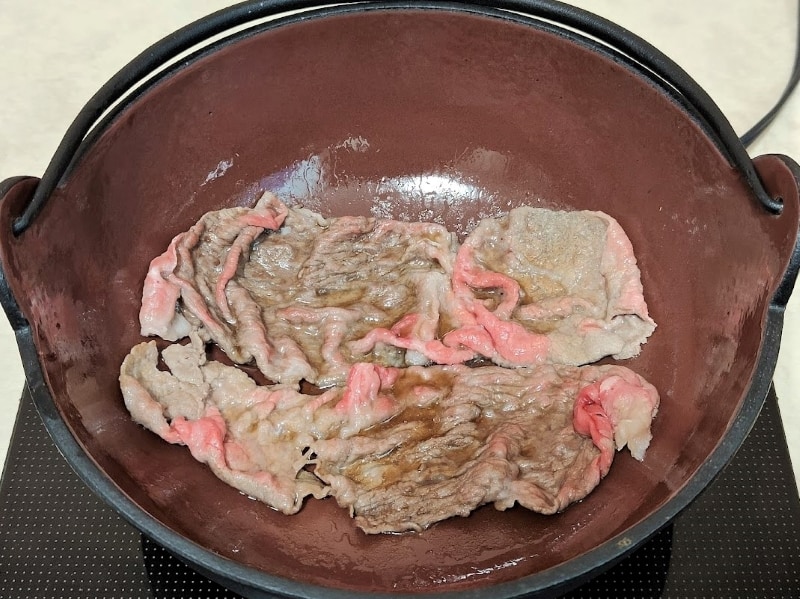
Step 3
Heat a large pot with beef fat over medium heat. Once the pot is coated with oil, remove the beef fat and add beef slices. Once they are lightly browned, drizzle a small amount of the sukiyaki sauce over them, then transfer to a plate. Repeat this process for all the beef slices.
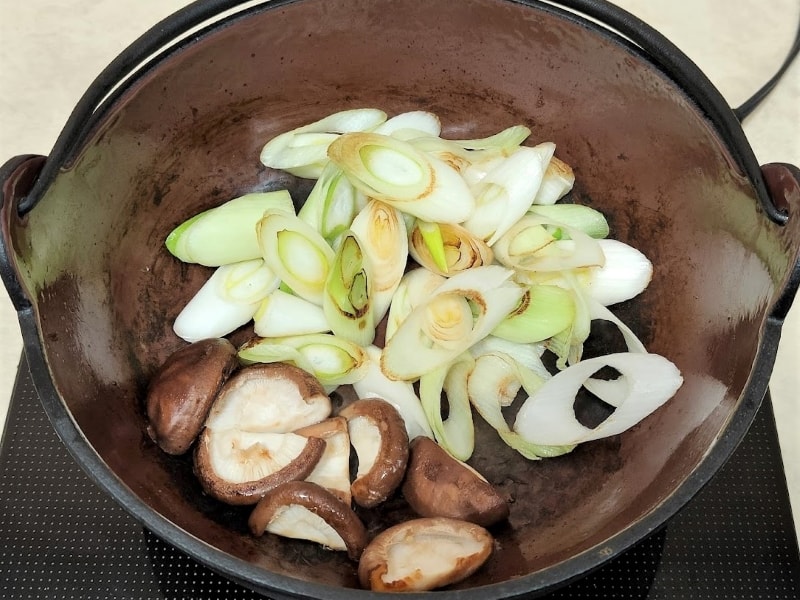
Step 4
Add the leeks and shiitake mushrooms to the pot and cook until lightly browned.
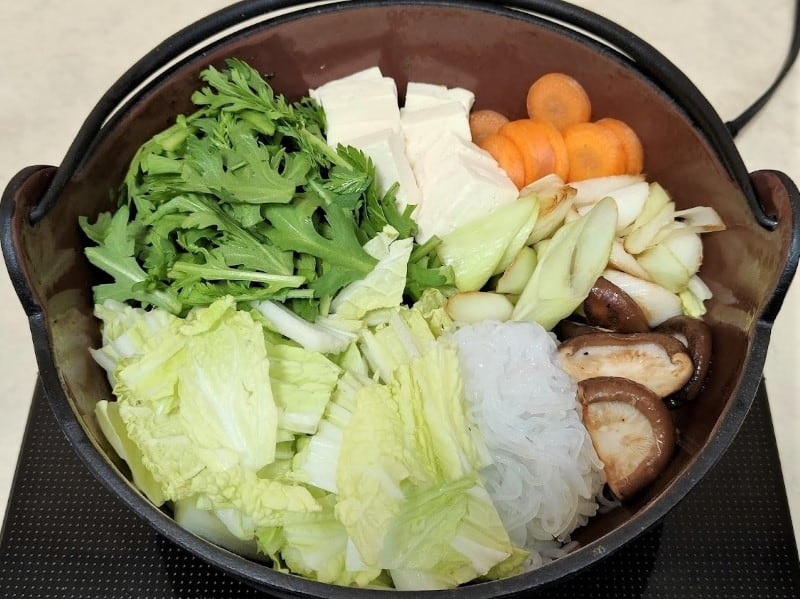
Step 5
Add the sukiyaki sauce and the other prepared ingredients (hakusai, shungiku, carrot, shirataki, tofu) to the pot. (If the pot cannot hold all of the ingredients or you are preparing more than 3 servings, use only half or one-third of them, including the leeks and shiitake mushrooms.) Cover the pot and cook over medium heat.
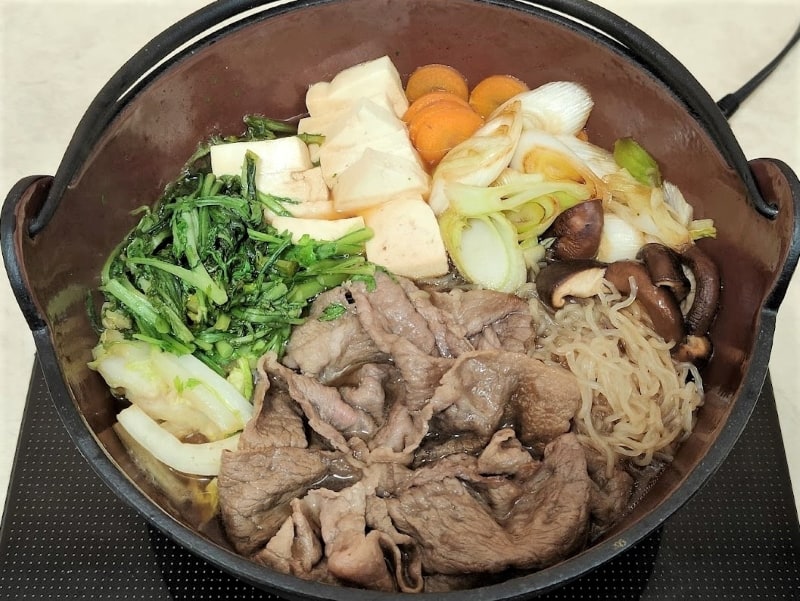
Step 6
Once it comes to a simmer, remove the lid and turn the ingredients over. Add the beef slices back in, cover the pot, and let it simmer again. After a few minutes, when the ingredients are cooked through, the dish is ready to be served.
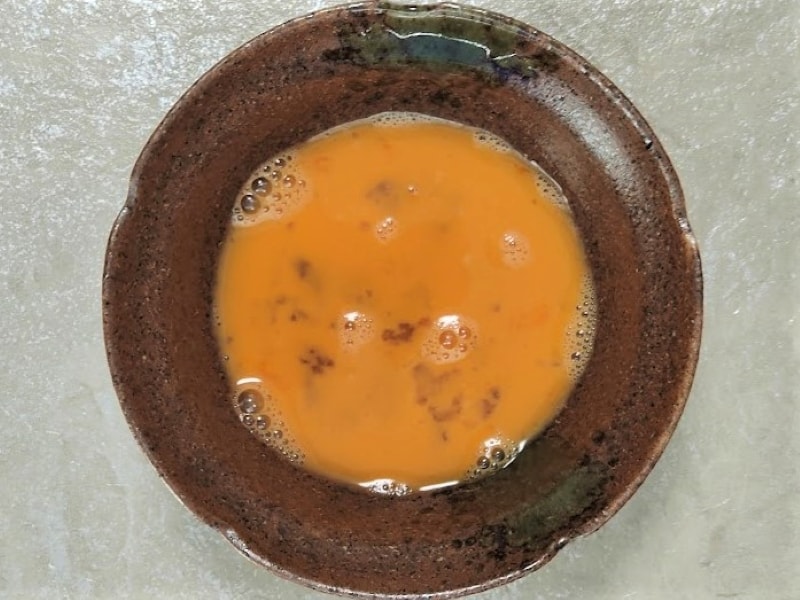
Step 7 (optional)
Crack an egg into each individual bowl and beat it for dipping.
Step 8
If the pot cannot hold all of the ingredients or you are preparing more than 3 servings, cook the remaining prepared ingredients with sauce after eating the first batch (repeat steps 5 and 6).
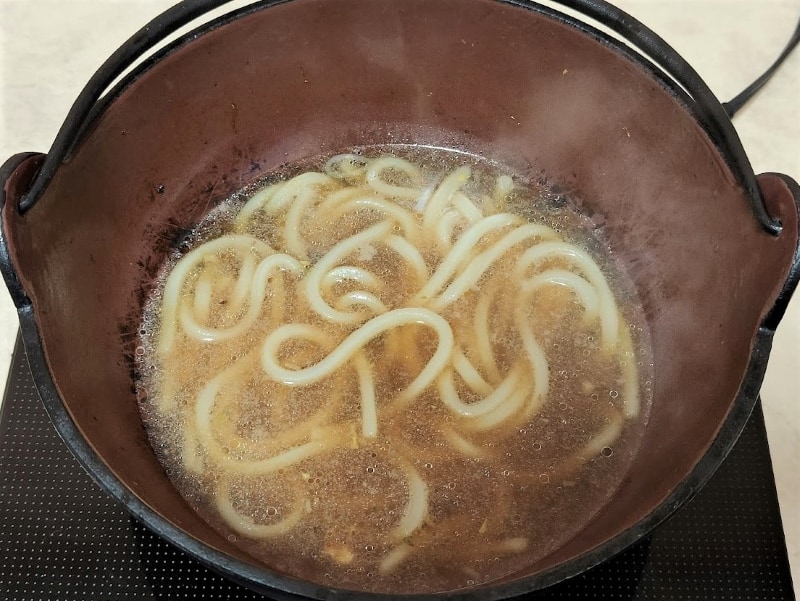
Step 9 (optional)
After finishing all the prepared ingredients, add the udon noodles to the pot. Simmer them until cooked. Then, enjoy.
To store
You can store it in the refrigerator for up to 2 days.
Notes
If you don't use eggs for dipping, the seasoning might be a bit strong. In that case, add water or kombu dashi (kelp stock) to the sukiyaki sauce and adjust the flavor to your liking. Similarly, if the sauce becomes too strong after several rounds of simmering, adjust the flavor accordingly.
Tips on how to make
- Shirataki (konjac) noodles should be prepared to reduce their odor. While this recipe suggests using sugar or salt, you can also boil the noodles to achieve this effect.
- Sauté the beef first. This helps the beef retain its flavor during simmering. I recommend sautéing just one side of the beef, but you can also sauté both sides.
- For Japanese leeks and shiitake mushrooms, it is recommended to sauté them before simmering. Browning them enhances their flavor.
If you try this recipe, I’d love to hear what you think. Please consider leaving a review and star rating in the comments below. If you enjoyed it, I’d really appreciate it if you shared it with your friends.
Recipe card
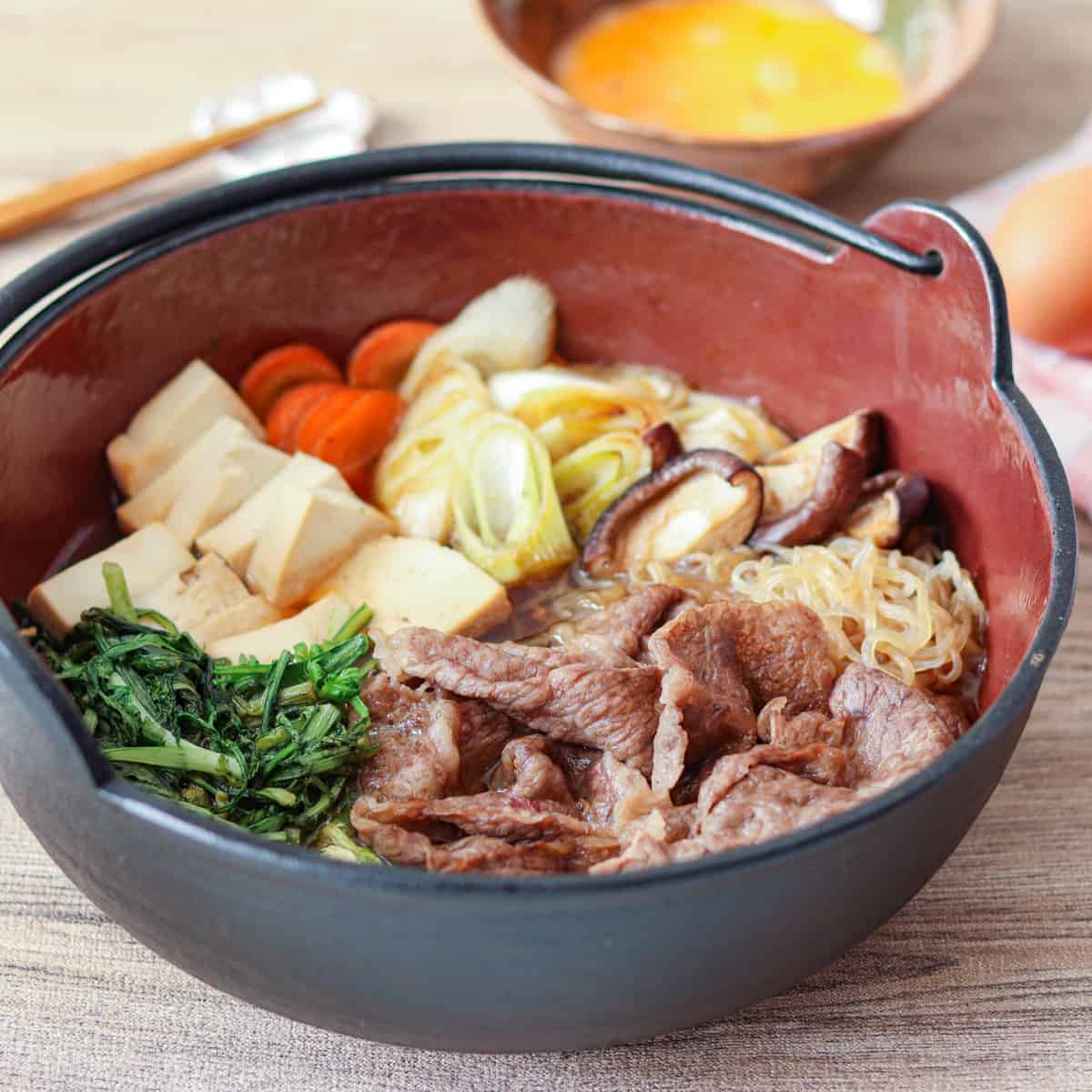
Sukiyaki (Japanese Beef Hot Pot)
Ingredients
Sukiyaki sauce:
- ⅓ cup sake
- ⅓ cup mirin
- ⅓ cup soy sauce
- 2 Tbsp sugar
Sukiyaki:
- 0.55 lb thinly sliced beef
- 3.5 oz Japanese leek (naganegi) (can be substituted with regular leek)
- 4 shiitake mushrooms
- 3 leaves hakusai (napa cabbage)
- 3.5 oz shungiku (crown daisy)
- 1.2 oz carrot
- 1 package shirataki (konjac) noodles (7 oz/200 g)
- 1 Tbsp sugar or salt (for the shirataki)
- 5.3 oz firm tofu (momen tofu)
- 1 Tbsp beef fat (neutral oil can be substituted)
For dipping:
- 2 (or more) pasteurized eggs
For the final dish:
- 2 servings udon noodles (frozen, dried, or pre-cooked)
Instructions
- Prepare the ingredients as follows:Japanese leek: Slice it diagonally into ⅖-inch (1 cm) pieces.Shiitake mushrooms: Remove the stems and cut the caps in half.Hakusai: Cut it into bite-sized pieces.Shungiku: Cut it into 1.6-inch (4 cm) pieces.Carrot: Cut it into ⅕-inch (5 mm) thick slices.Shirataki noodles: Rinse them with water and cut them in half. Toss them with sugar or salt in a colander and let them sit for 3 minutes. Then, rinse them under running water.Tofu: Cut it into bite-sized pieces.
- Put seasonings for sukiyaki sauce (sake, mirin, soy sauce, and sugar) in a small pot and cook over medium heat. Once the sugar has dissolved, turn off the heat. Sukiyaki sauce is ready.
- Heat a large pot with beef fat over medium heat. Once the pot is coated with oil, remove the beef fat and add beef slices. Once they are lightly browned, drizzle a small amount of the sukiyaki sauce over them, then transfer to a plate. Repeat this process for all the beef slices.
- Add the leeks and shiitake mushrooms to the pot and cook until lightly browned.
- Add the sukiyaki sauce and the other prepared ingredients (hakusai, shungiku, carrot, shirataki, tofu) to the pot. (If the pot cannot hold all of the ingredients or you are preparing more than 3 servings, use only half or one-third of them, including the leeks and shiitake mushrooms.) Cover the pot and cook over medium heat.
- Once it comes to a simmer, remove the lid and turn the ingredients over. Add the beef slices back in, cover the pot, and let it simmer again. After a few minutes, when the ingredients are cooked through, the dish is ready to be served.
- (Optional) Crack an egg into each individual bowl and beat it for dipping.
- If the pot cannot hold all of the ingredients or you are preparing more than 3 servings, cook the remaining prepared ingredients with sauce after eating the first batch (repeat steps 5 and 6).
- (Optional) After finishing all the prepared ingredients, add the udon noodles to the pot. Simmer them until cooked. Then, enjoy.
Notes
- If you don't use eggs for dipping, the seasoning might be a bit strong. In that case, add water or kombu dashi (kelp stock) to the sukiyaki sauce and adjust the flavor to your liking. Similarly, if the sauce becomes too strong after several rounds of simmering, adjust the flavor accordingly.
- You can store it in the refrigerator for up to 2 days.


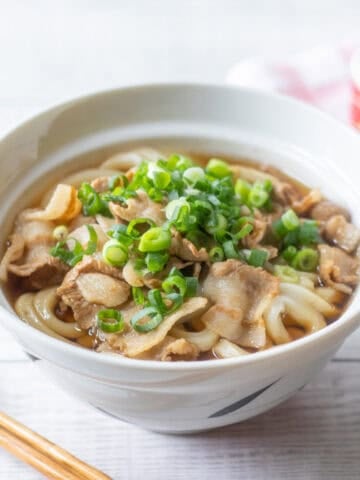


Leave a Rating and a Comment